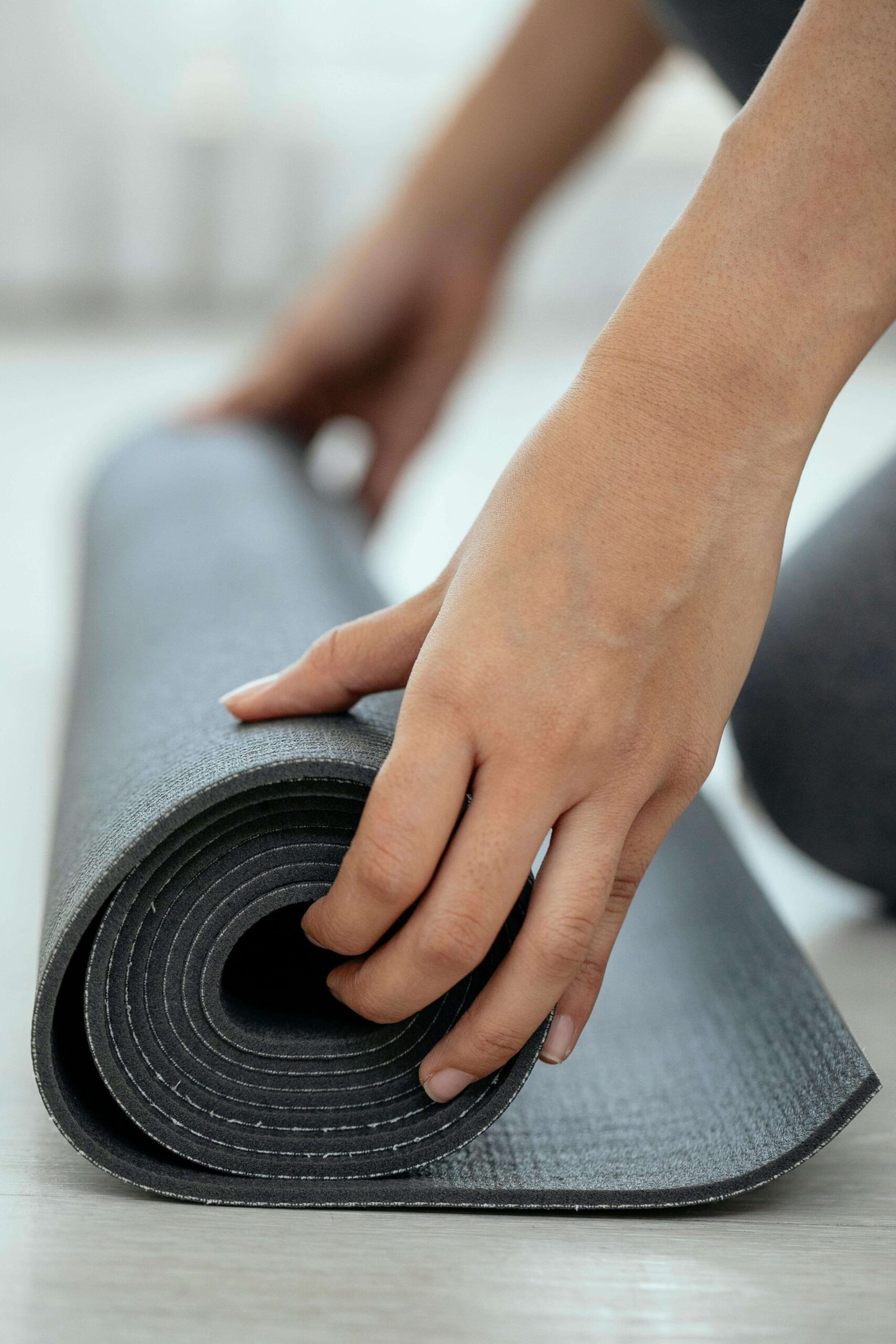Exercise is an essential component of a well-rounded fitness routine, offering numerous benefits for individuals of all fitness levels.
From reducing the risk of injury to improving cardiovascular health, lower impact exercises like walking, swimming, cycling, and yoga provide a gentler alternative to high-impact activities.
We will explore the importance of incorporating lower impact exercise into your routine, the various types of exercises to try, and how to do so safely and effectively. Let’s dive in!
Key Takeaways on Lower Impact:
- Lower impact exercises reduce the risk of injury, making them suitable for all fitness levels.
- Incorporating lower impact exercises into your routine can improve cardiovascular health and have a positive impact on joint health.
- When doing lower impact exercises, it is important to warm up and cool down properly, wear proper footwear, stay hydrated, and consult a doctor if you have any health conditions.
Why Is Lower Impact Exercise Important?
Low-impact exercise is of significance as it offers a milder form of physical activity that diminishes the likelihood of injuries, particularly among older adults and individuals with conditions such as arthritis, while still effectively engaging muscle groups and contributing to overall well-being.
Participating in exercises like walking, swimming, or gentle yoga enables individuals to enhance their cardiovascular health, flexibility, and strength without overly stressing their joints. Esteemed organizations such as the Cigna Group underscore the advantages of low-impact exercise for individuals of varying ages and fitness levels. It enables individuals to remain active and preserve their mobility, rendering it a viable choice for long-term health and wellness. Low-impact exercises can be readily adjusted to accommodate individual requirements and preferences, promoting inclusivity and enjoyment in maintaining physical fitness.
What Are The Benefits Of Lower Impact Exercise?
The advantages of engaging in low-impact exercise are manifold, encompassing enhanced muscle mass and calorie expenditure, improved joint health, and overall physical well-being.
1. Reduced Risk Of Injury
One of the key advantages of engaging in low-impact exercise is the substantial reduction in the risk of sustaining injuries. This is attributed to the gentle contact and controlled movements involved in such exercises, as noted by WebMD.
The inclusion of low-risk exercises in one’s fitness routine can be especially advantageous for individuals who are either new to physical activity or are in the process of recovering from an injury. By abstaining from high-impact actions like jumping or sudden directional changes, these exercises facilitate the gradual development of strength and endurance while minimizing undue pressure on the joints and muscles. This approach not only supports the establishment of a consistent workout regimen but also helps in avoiding setbacks and prolonged recovery periods.
WebMD advocates for the incorporation of low-impact activities such as walking, swimming, and cycling for individuals seeking to enhance their fitness levels in a safe and efficient manner.
2. Suitable For All Fitness Levels
Low-impact exercises are well-suited for individuals of all fitness levels, offering a sustainable and inclusive approach to physical activity.
These exercises can be readily adjusted to cater to beginners by incorporating shorter durations, reduced intensity levels, and frequent rest intervals. For individuals desiring a greater challenge, progressive increments in duration or the integration of resistance bands can enhance the workout’s effectiveness. The flexibility of low-impact exercises makes them an excellent choice for those aiming to establish a steady and enduring fitness regimen. By commencing at a comfortable threshold and gradually advancing, individuals can effectively enhance their overall health and well-being while mitigating the likelihood of sustaining injuries.
3. Lowers Impact On Joints
Low-impact exercises offer specific benefits by mitigating the impact on joints, minimizing compression, and providing relief for individuals with arthritis. These exercises, such as swimming, biking, and yoga, are designed to concentrate on movements that are gentle on the joints, thus aiding in enhancing flexibility, strengthening muscles around the joints, and improving overall joint function.
Participation in these activities can contribute to a reduction in pain, stiffness, and inflammation in the joints among individuals with arthritis, consequently promoting improved mobility and a higher quality of life. Moreover, low-impact exercises facilitate the maintenance of a healthy weight, which is crucial for reducing additional stress on the joints and preventing the progression of arthritis.
4. Improves Cardiovascular Health
Participating in low-impact exercises has the potential to notably enhance cardiovascular health by sustaining an elevated heart rate without subjecting the body to undue stress. Activities like brisk walking, swimming, or cycling fall under this category, as they are gentle on the joints while simultaneously offering a demanding workout for the heart and lungs.
Integrating low-impact exercises into a habitual fitness regimen can contribute to fortifying the heart muscle, enhancing circulation, and reducing the likelihood of cardiovascular illnesses. These workouts are inclusive of individuals with varying levels of fitness and can be adjusted to accommodate specific requirements and objectives.
What Are The Different Types Of Lower Impact Exercises?
There exist a variety of low-impact exercises that cater to diverse preferences and fitness objectives, encompassing activities such as swimming, yoga, and walking.
1. Walking
Walking is recognized as one of the most straightforward and efficient forms of low-impact exercise, rendering it accessible to a wide range of individuals. This activity not only enhances cardiovascular well-being through elevating heart rate and fortifying heart muscles but also plays a crucial role in safeguarding joints by facilitating improved circulation and diminishing the likelihood of arthritis development.
Furthermore, an additional advantage of walking lies in its effortless integration into one’s daily routine. Whether it involves opting for walking as a means of commuting to work, choosing stairs over elevators, or leisurely strolling in a nearby park, it presents a convenient approach to maintaining an active lifestyle without necessitating specialized equipment or a membership at a fitness center.
2. Swimming
Swimming is a highly beneficial low-impact exercise that offers a comprehensive workout by utilizing the natural resistance of water. This versatile activity serves not only as a means to tone muscles but also as a way to enhance cardiovascular health by improving heart and lung function. The buoyancy of water provides body support, reducing joint strain and lowering the risk of injury, thus making swimming an optimal choice for individuals across various fitness levels.
Plus its physical benefits, swimming can facilitate weight management, promote flexibility, and alleviate stress. This holistic approach to fitness underscores swimming as an advantageous form of exercise for enhancing overall health and well-being.
3. Cycling
Cycling, also known as biking, is a popular form of low-impact exercise that offers significant cardiovascular benefits while being gentle on the joints. It is an adaptable activity that can be customized to accommodate individuals with various fitness levels, ranging from novice to experienced riders.
Beginners may find it beneficial to commence with leisurely rides on flat terrain to gradually enhance stamina and confidence before progressing to more demanding routes. Advanced cyclists, on the other hand, may prefer rigorous hill climbs or interval training sessions to challenge themselves and augment endurance levels.
The cardiovascular advantages of cycling are extensively documented, with improvements in circulation, strengthened heart muscles, and reduced blood pressure being prominent outcomes. The accessibility of cycling, whether undertaken indoors on a stationary bike or outdoors amidst natural surroundings, renders it a pragmatic and enjoyable exercise option for a wide demographic.
4. Yoga
Yoga is a versatile low-impact form of exercise that improves flexibility, balance, and mental well-being by incorporating physical postures, breathing techniques, and meditation.
Various styles of yoga, such as Hatha, Vinyasa, and Bikram, offer distinct benefits:
- Hatha yoga emphasizes alignment and gentle movements, making it suitable for beginners.
- Vinyasa yoga, characterized by its flowing sequences, enhances strength and endurance.
- Bikram yoga, practiced in a heated setting, facilitates detoxification.
Irrespective of the chosen style, practicing yoga contributes to stress reduction, enhanced concentration, and relaxation, leading to a calmer mental state and improved physical health.
How To Incorporate Lower Impact Exercise Into Your Routine?
Integrating low-impact exercise into one’s regimen can be readily accomplished through consistent and mindful routines, whether performed at home or within a gym environment.
1. Start Slowly And Gradually Increase Intensity
When commencing a low-impact exercise regimen, it is imperative to initiate the process gradually and systematically elevate the intensity to develop fitness levels securely. This progressive approach enables the body to acclimate and strengthen gradually, thereby diminishing the likelihood of sustaining injuries.
Initiate by integrating brief bursts of heightened intensity into the workout routine, such as accelerating the pace of walking or incorporating light weights. Subsequently, as one becomes more at ease with these intervals of intensified activity, they can progressively extend the duration of such periods.
Attending to the body’s cues and recognizing personal limitations are pivotal aspects of a successful fitness journey. It is imperative to bear in mind that consistency and patience are fundamental components in attaining enduring outcomes.
2. Mix It Up With High Impact Exercises
Incorporating a combination of low-impact exercises with intermittent high-impact workouts can establish a well-rounded and all-encompassing fitness regimen. Low-impact activities such as walking, swimming, or yoga offer gentle movements that are easy on the joints, promoting enhanced flexibility and endurance. In contrast, high-impact exercises like running or HIIT workouts serve to elevate cardiovascular fitness levels and increase calorie expenditure. The synergy between these two types of exercises contributes to an overall improvement in strength, stamina, and agility.
For a safe integration of both low and high-impact workouts, it is advisable to progressively adjust the intensity and duration of the exercises, remain attentive to the signals your body provides, and consistently engage in proper warm-up and cool-down routines. Seeking guidance from a fitness professional can offer personalized recommendations on how to effectively balance low and high-impact activities within your fitness routine.
3. Listen To Your Body
It is imperative to heed the signals your body sends when partaking in low-impact exercise to minimize the risk of injury and optimize the effectiveness of the workout.
Throughout your exercise regimen, it is essential to closely monitor any discomfort or pain you may experience. These bodily cues serve as valuable indicators that warrant attention. Should you perceive any strain or undue fatigue, it is advisable to modulate the intensity of your exercises accordingly.
Maintaining a delicate equilibrium between challenging oneself and preventing overexertion is paramount. Adherence to proper form during exercises is crucial in mitigating the likelihood of injury. By attentively heeding the signals your body emits and implementing necessary modifications, you can safely reap the benefits of engaging in low-impact exercise.
What Are The Precautions To Take When Doing Lower Impact Exercise?
When participating in low-impact exercise, it is advisable to observe specific precautions to enhance safety and optimize the advantages of the workout.
1. Warm Up And Cool Down Properly
Properly engaging in warm-up activities before and cool-down routines after engaging in low-impact exercises is imperative for the prevention of injuries and the optimization of performance.
A thorough warm-up serves the purpose of enhancing blood circulation to the muscles, thereby priming them for the impending physical exertion. Additionally, it plays a crucial role in improving flexibility and mobility, consequently lowering the likelihood of muscular strains and sprains. Dynamic stretching exercises, such as leg swings, arm circles, and hip rotations, are particularly effective components of a comprehensive warm-up regimen.
Conversely, incorporating a cool-down phase post-exercise is equally vital. The cool-down period assists the body in transitioning to a resting state and facilitates muscle recovery. Stretching exercises during this phase often involve static stretches, such as hamstring stretches, chest stretches, and calf stretches, which aid in promoting muscle relaxation and flexibility.
2. Wear Proper Footwear
Wearing appropriate footwear during low-impact exercises is essential for providing the necessary support and enhancing safety.
When individuals choose the correct shoes for activities such as walking, yoga, or light jogging, they can effectively prevent injuries and enhance their overall workout experience.
For example, walking shoes are designed to offer cushioning and flexibility, making them ideal for brisk walks. On the other hand, shoes meant for yoga need to provide stability during various poses.
Individuals engaging in occasional light jogging should opt for shoes with adequate arch support and shock absorption to protect their joints and ensure a comfortable stride.
By prioritizing support and comfort in the selection of footwear, individuals can significantly improve their fitness journey.
3. Stay Hydrated
Maintaining proper hydration levels is imperative during physical activity, including low-impact exercises, in order to sustain optimal bodily functions and performance.
It is advisable to consume water before, during, and after your workout regimen to replenish the fluids lost through perspiration. Monitoring your water intake is essential, with a general suggestion of aiming for a minimum of 8-10 cups of water daily, although individual requirements may vary. To ensure adequate hydration, attentiveness to the color of urine is crucial – it should exhibit a pale yellow hue. Additionally, incorporating water-rich foods such as cucumbers and watermelon into your diet can serve as supplementary means to maintain hydration levels. It is essential to remember that adequate hydration is fundamental to attaining peak physical condition and optimizing exercise performance.
4. Consult A Doctor If You Have Any Health Conditions
It is recommended to consult a medical professional before initiating a low-impact exercise program, especially if you have any pre-existing health conditions, in order to prioritize safety.
The importance of medical consultation for individuals with health conditions cannot be overstated, as it facilitates a comprehensive evaluation of one’s current health status. In collaboration with a healthcare provider, personalized recommendations can be made regarding the type and intensity of exercises that are most suitable for the individual’s specific condition. This customized approach ensures that the exercise regimen is aligned with the individual’s health objectives while minimizing the potential risk of exacerbating underlying health issues. Furthermore, healthcare professionals can offer valuable insights into potential modifications or adaptations to accommodate the individual’s unique health requirements during the exercise routine.
Frequently Asked Questions
What is the meaning of ‘lower impact’?
Lower impact refers to activities, products, or behaviors that have a reduced negative effect on the environment or society compared to other alternatives.
How can I make a lower impact on the environment?
There are many ways to make a lower impact on the environment, such as using renewable energy sources, reducing waste, and choosing sustainable products.
Why is it important to consider the impact of our actions?
Our actions can have a significant impact on the environment and society, so it is crucial to consider the consequences of our choices and make efforts to minimize negative impacts.
What are some examples of lower impact products?
Some examples of lower impact products include reusable water bottles, energy-efficient appliances, and biodegradable cleaning products.
How does lower impact benefit society?
Lower impact practices can benefit society by promoting a healthier environment, reducing resource depletion, and creating sustainable communities.
What role does government play in promoting lower impact practices?
Governments can play a crucial role in promoting and implementing lower impact practices through regulations, incentives, and public awareness campaigns.


